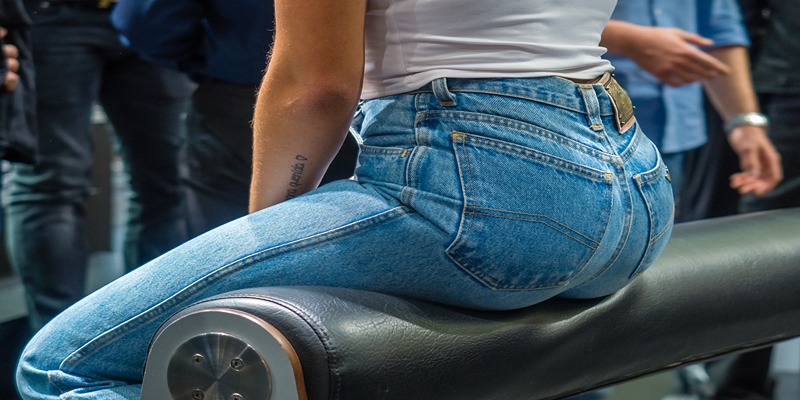Daily Strategies to Ease Hip Pain Effectively
Dec 12, 2023 By Madison Evans
Hip pain is a typical ache that people of all ages and walks of life deal with. Hip discomfort, whether from sitting for extended periods of time, doing heavy physical activity, or a more serious medical problem, may have a major influence on a person's quality of life and health in general. In order to alleviate pain and improve quality of life, it is vital to effectively manage hip discomfort. We explore realistic ways to alleviate hip discomfort and improve mobility in this article. We want to provide you with the information and resources to overcome hip pain and get back to moving freely by helping you understand the reasons, integrating specific exercises, and making lifestyle improvements.

Understanding Hip Discomfort
There are a number of potential causes of the chronic pain and suffering that people with hips endure on a daily basis. Hip pain may be a result of poor lifestyle choices including sitting for extended periods of time or engaging in too much physical activity. Another typical factor is sitting or standing incorrectly, which puts strain on the hips over time.
Arthritis, bursitis, and muscular imbalances are some of the preexisting medical issues that may make hip discomfort worse. Inflammation, joint degeneration, or hip muscle weakness may result from these disorders.
The best way to alleviate hip pain is to look at the problem from every angle. Eliminating only one source may not be enough to solve the problem. Hip pain is frequently best treated with a multi-pronged approach that includes specific exercises, changes to one's lifestyle, and, in extreme circumstances, surgical intervention. When people are aware of the many causes of hip pain, they are better able to take charge of their condition and make positive changes.
Hip Pain Relief Methods
Stretching and Exercises
Hip pain may be greatly reduced by following a routine of certain stretches and exercises. By incorporating these techniques into your routine, you may enhance your flexibility, build stronger supporting muscles, and alleviate hip stress.
Think about adding sitting forward bends, piriformis stretches, and hip flexor stretches to your regimen. By releasing tension and encouraging relaxation in the hip muscles, these exercises may be very helpful.
Particular activities, together with stretching, might alleviate pain and forestall its return. When looking to build hip strength, clamshells, leg lifts, and hip bridges are great options. Maintaining a consistent schedule for doing these stretches and workouts is essential. With consistent effort, you may gradually increase your hip mobility, alleviate discomfort, and boost hip health.
Never force yourself beyond your limits while exercising or stretching. If you suffer from chronic pain or have a pre-existing medical condition, it is best to get the advice of a doctor or physical therapist before beginning an exercise programme.
Heat and Cold Therapy
Each of the two treatment modalities—heat and cold—has its place in relieving hip pain. The use of heat, in the form of compresses or heating pads, may help loosen up tissues, which in turn increases blood flow and reduces muscular stiffness. Those suffering from persistent hip discomfort or muscular strain will find it very helpful.
On the other hand, cold treatment, generally in the form of ice packs or cold compresses, lowers inflammation and numbs the region, offering brief pain relief. For sudden injuries or conditions marked by swelling, it is advised to use it.
Adhering to these protocols will ensure the efficacy of these treatments. To avoid burns, use heat for 15-20 minutes at a time during heat treatment. To avoid frostbite, use cold treatment for no more than ten to fifteen minutes at a time. To avoid direct contact, always use a towel or other barrier between your skin and the heat or cold source. Also, be sure to let your skin cool down between applications. When used properly, these treatments may alleviate hip discomfort and speed up the healing process.

Over-the-Counter (OTC) Remedies
Hip pain may be effectively managed with over-the-counter (OTC) medications, especially when used as part of a larger strategy. Among these choices are over-the-counter pain medicines that do not need a prescription, such as ibuprofen or acetaminophen, which may reduce swelling and ease discomfort.
You may also find localized comfort by applying a topical treatment or ointment containing substances like capsaicin or menthol to the hip region. In order to alleviate pain, these products either numb the skin or provide a warming feeling.
Nevertheless, use extreme care while dealing with over-the-counter medications. Because of potential drug interactions and other health issues, not everyone can use every product. Consequently, before beginning a new regimen of over-the-counter pain relievers, it is strongly advised to visit a healthcare practitioner. If you're experiencing hip pain, they can advise you on the best course of action to take depending on your individual requirements.
Improving Hip Mobility
Improving hip mobility is an important part of managing hip pain effectively. Lessening stiffness and increasing flexibility, enhanced mobility may aid in the prevention of future hip problems. Some possible approaches are as follows:
Include hip-opening moves like leg swings, hip-circles, and hip-rotations in your routine. These motions are great for maintaining and improving your hips' entire range of motion.
In either a seated or standing position, watch your posture carefully. Lessen the load on your hips by keeping your posture straight. When you can, make use of ergonomic seats and desks to help with posture.
Strength training and flexibility exercises for the hips should focus on stability and balance. To improve your hip's ability to move freely, you may want to look into tai chi, yoga, or Pilates.
You may improve hip mobility and reduce pain by stretching regularly, focusing on the flexors, quadriceps, and gluteal muscles in particular.
You may improve your hip mobility, alleviate pain, and boost hip health by making these habits a part of your everyday routine.
Conclusion
By using a comprehensive approach, it is possible to effectively address hip pain and enhance mobility. People may discover relief from hip pain by learning what causes it and then using a variety of pain management techniques, such as stretching, heat and cold therapy, and over-the-counter medicines. Exercises, posture correction, and balance training that focus on hip mobility may help improve hip health in the long run. Keep in mind that getting advice from a healthcare expert is essential. Adopting these practices can help you feel better every day and get your mobility back.








